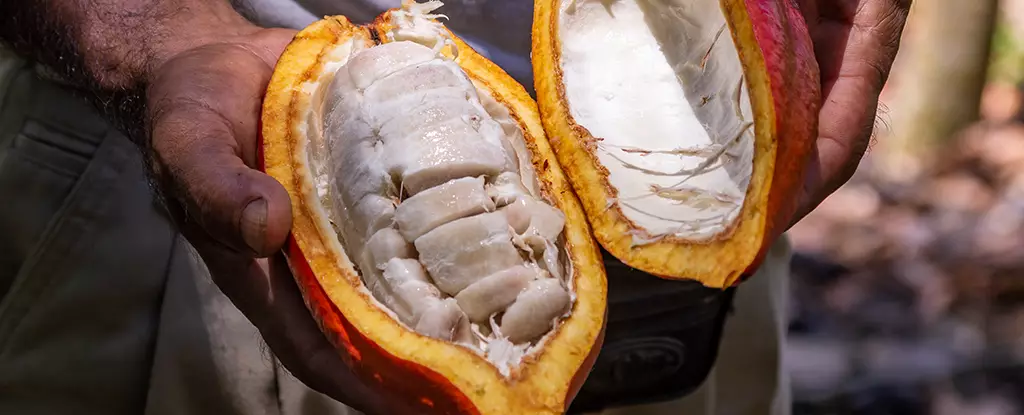The consumption of chocolate has long been associated with indulgence and pleasure, but it has also brought concerns about the health implications of consuming too much sugar and saturated fats. While Americans enjoy millions of tons of chocolate each year, the sweet treat comes with a dark side, contributing to the risk of diabetes and cardiovascular disease. However, a team of researchers from ETH Zürich in Switzerland has set out to revolutionize the chocolate recipe by incorporating parts of the cocoa fruit that are usually discarded.
The cocoa fruit, which serves as the source of chocolate, contains more than just the cacao seeds used in chocolate production. Researchers have found that the outer pod of the fruit, known as the endocarp, is rich in fiber and sweetness. By separating and drying the fiber-rich endocarp and combining it in powdered form with juice from the pulp of the fruit, a sweet gel can be created. This innovative approach allows for the reduction of refined sugar in chocolate recipes while increasing the fiber content.
The newly developed chocolate recipe not only provides a unique sensory experience but also offers health benefits. By replacing a portion of refined sugar with the cocoa fruit gel, the researchers were able to achieve a balanced flavor profile without compromising sweetness. In fact, the resulting chocolate contained more fiber than traditional chocolate bars, making it a high-fiber, low-sugar alternative. This could be a game-changer in the chocolate industry, offering consumers a healthier option without sacrificing taste.
One of the key advantages of this innovative chocolate recipe is its potential to benefit cacao farmers. By utilizing parts of the fruit that are typically discarded as organic waste, farmers can generate additional revenue. The commercialization of this new chocolate product could open up new markets and opportunities for cacao growers, paving the way for a more sustainable and economically viable industry. Additionally, the increased focus on health-conscious products in the market could create a demand for low-sugar, high-fiber chocolate alternatives.
While the idea of whole-fruit chocolate holds promise, there are still challenges to overcome in bringing this product to market. Adapting the entire value creation chain, starting from the cocoa farmers to the production facilities, will require significant adjustments. However, with the proven success of the whole-fruit chocolate concept, there is a growing interest in developing this innovative product further. The potential of bringing a low-sugar, high-fiber chocolate alternative to consumers could be a step towards revolutionizing the chocolate industry and promoting healthier choices.
The reinvention of chocolate by incorporating parts of the cocoa fruit holds immense promise for creating a healthier alternative to traditional chocolate products. With its potential to reduce sugar content, increase fiber intake, and provide additional revenue streams for cacao farmers, this innovative approach could revolutionize the chocolate industry. As consumer preferences shift towards healthier options, the introduction of whole-fruit chocolate could be a significant step towards meeting the demands of a health-conscious market.


Leave a Reply